Introduction
Hybrid cloud environments, which combine private and public cloud resources, offer businesses flexibility and scalability. However, they also introduce unique security challenges. In this post, we’ll explore these challenges and provide solutions for securing hybrid cloud environments.
1. Understanding Hybrid Cloud Environments
Hybrid clouds integrate on-premises infrastructure (private cloud) with public cloud services, allowing data and applications to be shared between them. This setup provides the best of both worlds: control and scalability.
2. Key Security Challenges
- Data Security: Ensuring data integrity and privacy across different environments.
- Compliance: Meeting regulatory requirements in multiple jurisdictions.
- Visibility: Maintaining visibility and control over all cloud assets.
- Access Management: Controlling access across diverse platforms and services.
- Integration: Securely integrating legacy systems with new cloud technologies.
3. Implementing Robust Data Encryption
Encrypt data both at rest and in transit. Use strong encryption protocols to protect sensitive information and comply with regulatory standards. Cloud providers often offer built-in encryption services, but ensure they meet your security requirements.
4. Ensuring Compliance Across Environments
Regularly audit your hybrid cloud setup to ensure compliance with industry regulations and standards such as GDPR, HIPAA, and PCI-DSS. Use compliance management tools to monitor and report on compliance status.
5. Enhancing Visibility and Monitoring
Implement centralized monitoring and management tools to maintain visibility over your hybrid cloud environment. Use solutions like cloud security posture management (CSPM) to continuously assess security configurations and identify risks.
6. Managing Access and Identity
Use identity and access management (IAM) solutions to control access across your hybrid cloud. Implement multi-factor authentication (MFA) and least privilege access principles to minimize the risk of unauthorized access.
7. Securing Integration Points
Securely integrate on-premises systems with cloud services using secure APIs and gateways. Regularly test and monitor integration points for vulnerabilities and ensure that data transfers are encrypted.
Conclusion
Securing hybrid cloud environments requires addressing unique challenges related to data security, compliance, visibility, access management, and integration. By implementing robust encryption, compliance monitoring, centralized visibility tools, and secure integration practices, you can protect your hybrid cloud infrastructure from cyber threats and ensure a secure, scalable environment for your business operations.



